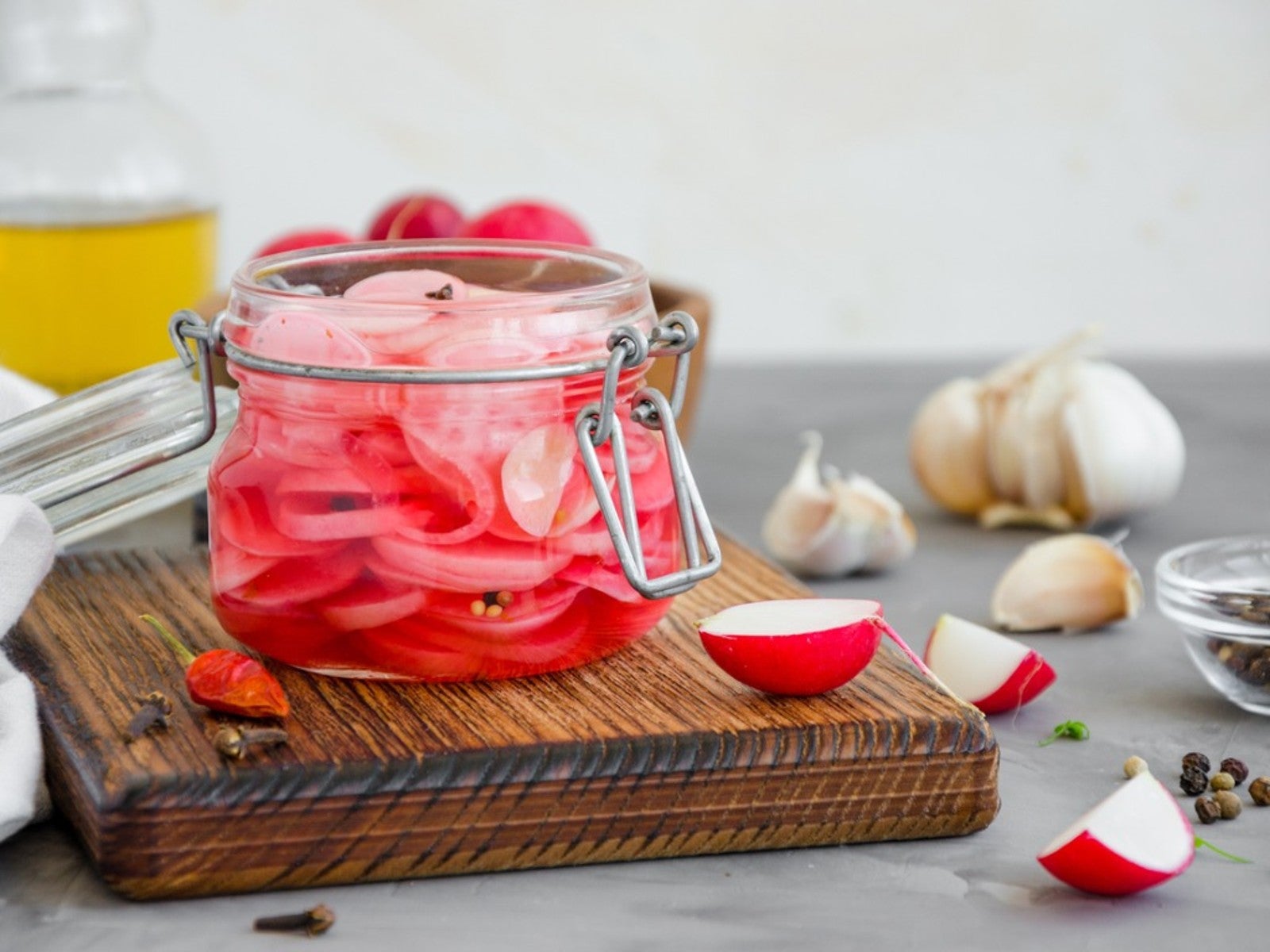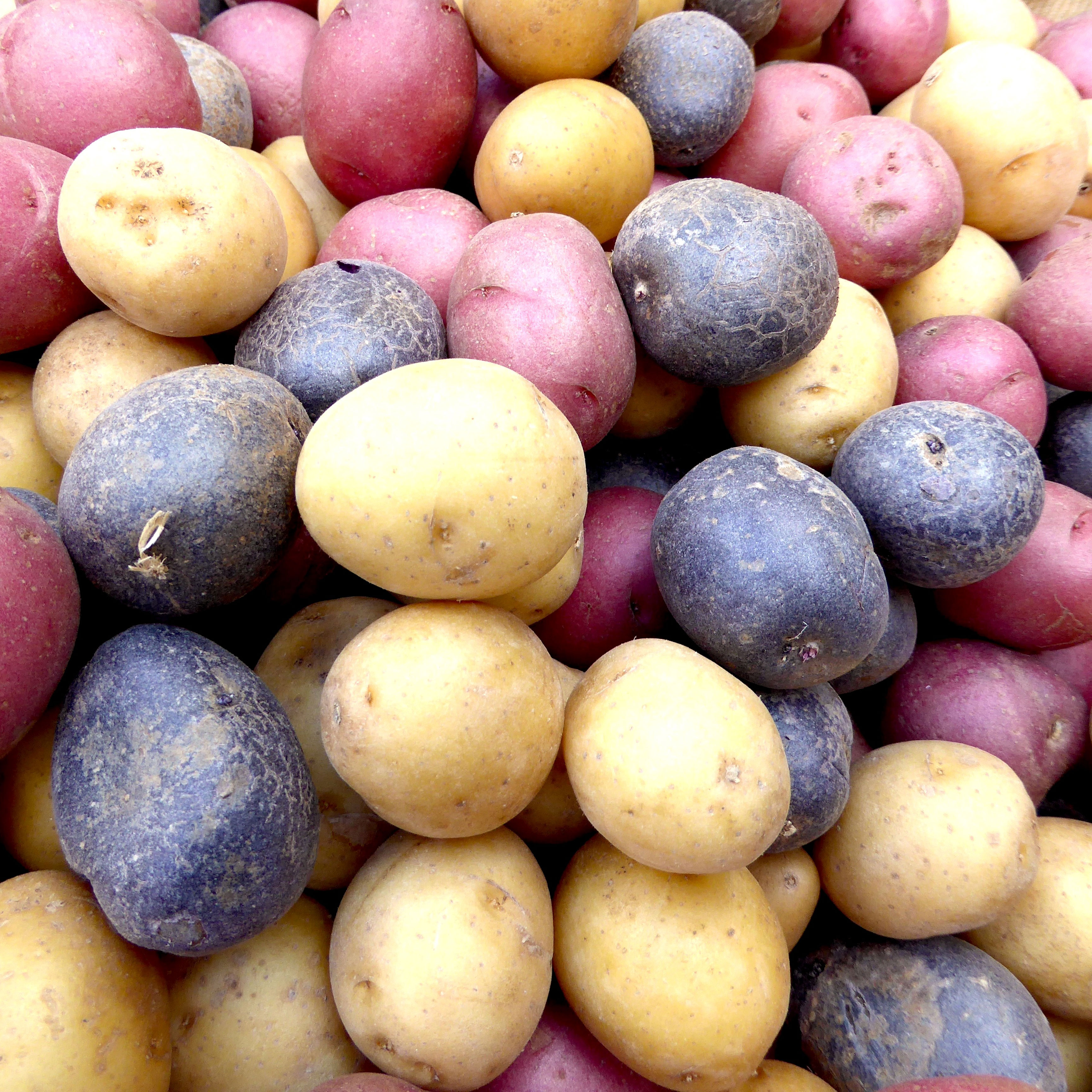How To Pickle Radishes From Your Garden

Radishes are one of those easy to grow, first on the table, early spring veggies. They impart a great peppery crunch to salads or just as a snack. Because they are an easy to grow vegetable, you may end up with more than can be used fresh at one time. This is when radish pickling recipes should make an entrance. What are preserved pickled radishes? Radish pickles are a simple method of preparing the root that will extend its shelf life for months.
About Radishes
Radishes can be sown directly from seed in the early spring, and are one of the first crops ready for harvest.
Radishes are known for their peppery crunch but they are also rich in calcium, potassium, sodium and vitamins A, B, C and K, not to mention they are low in calories. These cruciferous veggies also aid in lowering blood pressure and have been purported to lower the risk of heart disease.
Most people are familiar with the small, round hot pink to ruby red radishes with pristine white interiors but radishes also may be black, purple, white or yellow and may grow long and narrow much like a parsnip.
What are Quick Pickle Radishes?
Quick pickles are vegetables, in this case radishes, that that are preserved in a brine and then refrigerated, hence they are also referred to as refrigerator pickles.
Quick pickles are made with any or a combination of crisp vegetables such as radish, cucumber, carrot and onion. The vegetable is sliced and then preserved in a brine of vinegar, water or fruit juice, salt and often sugar along with any other flavors such as garlic or fish sauce. The fermenting concoction is then packed into a sealed container to ferment.
How to Preserve Radishes
Before preserving radishes you need to pick your radish. As mentioned, radishes come in various hues and shapes. Daikon radish is a popular radish used in many Asian cuisines that looks like a long, thick, white carrot. It makes a terrific pickled radish but regular round, red radishes can be used as well. Daikon is just easier to handle as it is a large root.
Gardening tips, videos, info and more delivered right to your inbox!
Sign up for the Gardening Know How newsletter today and receive a free copy of our e-book "How to Grow Delicious Tomatoes".
A simple preserved radish recipe is as follows.
- Prepare the brine by combining ½ cup each of vinegar and water, ¼ cup white sugar and a large pinch of kosher salt in a pan and bring to a boil. Pull from stove and allow to cool.
- Prepare one daikon radish and one carrot, washed, peeled and julienned (match stick) either with a mandolin or carefully with a sharp knife
- Fill a clean mason jar with the cut carrots and daikon and then pour the cooled brine over the vegetables until just covered. Cover with a lid.
- Refrigerate for at least four hours prior to serving to allow the flavors to marry.
As to what type of vinegar to use: Rice vinegar imparts an excellent clean, crisp flavor but other vinegars such as distilled, malt, white, red wine, or apple cider work well. The darker vinegars like balsamic or Chinese black vinegar not only result in an unpleasant look to the pickled radishes but are a bit strong and tannic for quick pickles.
To the above basic recipe you can add all sorts of other flavors. You may wish to add citrus juice in lieu of water, garlic, onion, other veggies like red cabbage, fish sauce, crushed red pepper, bay leaf, mustard seed, pickling spice, or fresh herbs.
Pickled radishes are best after 24 to 48 hours of fermenting and can be kept for 2-4 weeks, sealed and refrigerated.

Amy Grant has been gardening for 30 years and writing for 15. A professional chef and caterer, Amy's area of expertise is culinary gardening.
-
 Growing Climbing Roses: How To Create Elegant Displays With Maximum Blooms
Growing Climbing Roses: How To Create Elegant Displays With Maximum BloomsMaster the art of growing stunning climbing roses with this essential guide to creating vibrant, fragrant walls and structures all summer long.
-
 Tuck Into Tasty Homegrown Heritage Spud Varieties: 7 Of The Best Heirloom Potatoes
Tuck Into Tasty Homegrown Heritage Spud Varieties: 7 Of The Best Heirloom PotatoesDo you love your potatoes but fancy a little unique flavor? If you’re interested in taters with a heritage twist, here are some of the best heirloom potatoes to try